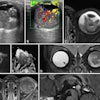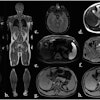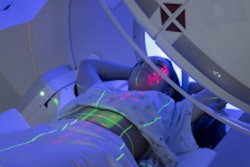
Tau-PET scans appear to be more effective than all other neuroimaging approaches for predicting cognitive decline in patients with Alzheimer's disease, according to a research group from the University of Geneva in Switzerland.
Researchers led by doctoral student Cecilia Boccalini studied the prognostic value of various PET scans used to diagnose and manage patients. The findings support the use of tau PET scans in memory clinics, they suggested.
"The prognostic value of tau-PET exceeded all other neuroimaging modalities, supporting its implementation in memory clinics' routine workup of patients," Boccalini and colleagues wrote in a study published on 9 August in Alzheimer's and Dementia.
Beta-amyloid plaques and tau neurofibrillary tangles are the hallmarks of Alzheimer's disease and are tightly linked, with research suggesting that amyloid deposits develop first, followed by tau tangles that lead to neurodegeneration and clinical symptoms.
PET scans -- amyloid PET, tau PET, and FDG-PET -- are used to measure this brain pathology based on the uptake of various radiotracers observed on the imaging results and provide clinicians with diagnostic and prognostic information to manage patients. However, associations between these scans or their combination in predicting eventual cognitive decline in clinical practice remain poorly understood, the authors noted.
In this study, the group aimed to clarify the roles of these biomarkers and determine which approach may be more effective, as observed in a group of patients at their memory clinic in Geneva.
The researchers included 94 patients with a range of symptoms from cognitively unimpaired to dementia who had undergone all three PET scans, as well as MRI scans, which can also measure neurodegeneration. They used linear regression and mediation analysis methods to test the independent and combined association between the imaging findings, cognitive performance, and decline.
Highlights of the findings included the following:
- Hypometabolism (measured using FDG-PET) had the strongest association with concurrent cognitive impairment.
- FDG-PET was superior compared to MRI as a measure of neurodegeneration.
- Neocortical tau pathology is the main determinant of cognitive decline over time.
- The prognostic value of tau-PET exceeded all other neuroimaging modalities for predicting cognitive decline.
Ultimately, the findings support each of the individual brain imaging exams as robust indicators of Alzheimer's pathology and are all associated with cognitive impairment and decline, yet tau PET stands out for its prognostic value, the group noted.
"Our results support tau as the necessary determinant for cognitive decline, as previously suggested in preclinical and very early asymptomatic [Alzheimer's disease] cohorts," the researchers concluded.
The full article can be found here.



















